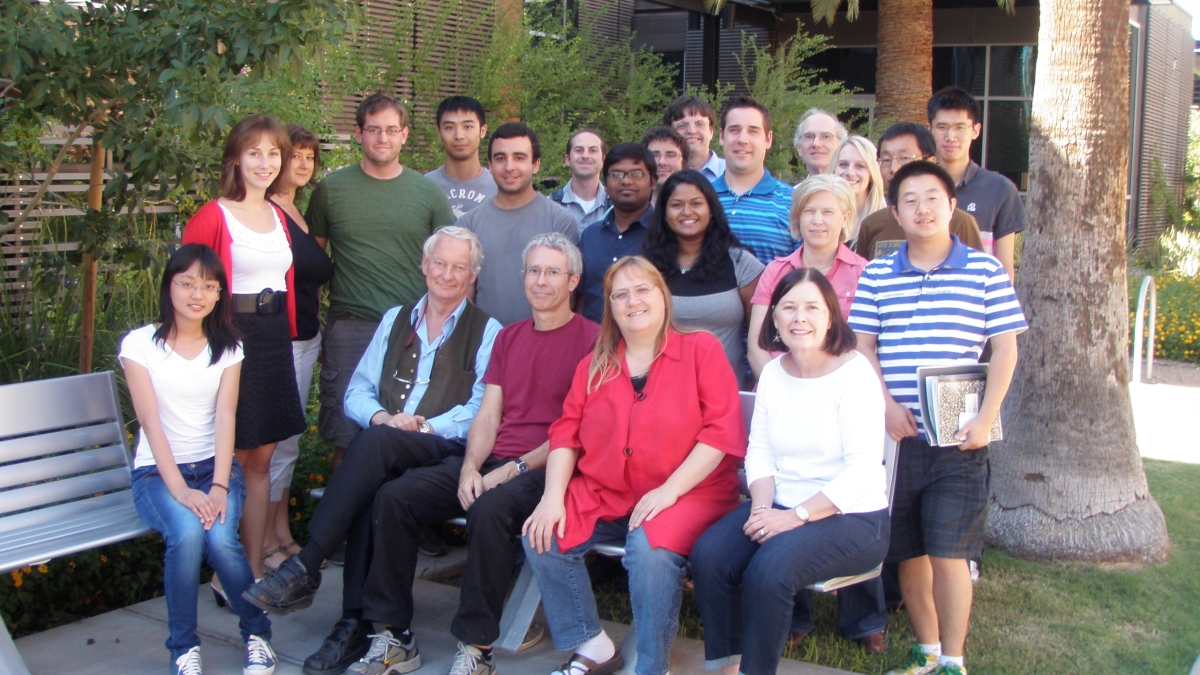ASU teams up with 7 research universities to establish new science center

Arizona State University is teaming up with seven other research universities to establish a new Science and Technology Center (STC), sponsored by the National Science Foundation (NSF), with an initial five-year, $25-million grant (extendable for another five years).
The STC award is one of three granted by the NSF in 2013, with the others going to Harvard and the Massachusetts Institute of Technology.
The center will be based at the University at Buffalo (UB). It is expected to transform the field of structural and dynamic molecular biology, including drug development, by using X-ray lasers to peer into biological molecules.
The BioXFEL center will focus on developing a new bio-imaging technique – including an advanced form of X-ray crystallography, called snapshot serial femtosecond nanocrystallography – to analyze a vast array of molecules at which drug molecules can be targeted.
This exciting new technique, the focus of several recent papers published in Science and Nature, has shown the potential to spur much needed innovation in the pharmaceutical field because it will provide scientists with new insights into how biological molecules function and what might be happening when disease occurs, and help determine what compounds could modify this activity.
Researchers at BioXFEL also will develop “crystallography without crystals,” in which X-ray snapshots (which are so brief that they avoid damaging the samples) can be used to image single viruses and large molecules, which currently cannot be crystallized for conventional crystallography.
“The NSF’s Science and Technology Center competition is very intense, with 270 applications this year alone, and few outstanding ideas are chosen nationally for this prestigious award,” said Sethuraman “Panch” Panchanathan, senior vice president for ASU’s Office of Knowledge Enterprise Development.
“The award of this center testifies to the world-class research conducted by our exemplary faculty and scientific leaders. It will significantly accelerate this activity and establish Arizona State University as the leader in developing new bio-imaging techniques to address health challenges and improve the quality of life,” Panchanathan said.
Eaton Lattman, a professor in the UB Department of Structural Biology in the School of Medicine and Biomedical Sciences and chief executive officer of the Hauptman-Woodward Medical Research Institute, will be director of the new center. John Spence, a Regents’ Professor of Physics at Arizona State University, which has the largest concentration of researchers in the consortium, will serve as the center’s director of science.
“With this new bio-imaging technique developed at the BioXFEL center, we will be able to analyze crystals 1,000 times smaller than the ones we can use now,” Lattman said. “These are crystals we could never use before and, in fact, we may not have known existed. A whole new universe of drug targets will become accessible for study as a result.”
For ASU’s Spence, the center will open new realms in biological research.
“We will be developing new techniques for making movies of molecular machines at work, and of viruses and biomolecules in their natural wet environment undergoing chemical change,” said Spence. “Some of the work, with professor Petra Fromme at ASU, will attempt to image the detailed atomic processes responsible for photosynthesis. This age-old process occurs when sunlight falls on green plants, allowing them to split water, creating the oxygen we breathe and converting the carbon dioxide responsible for global warming into carbohydrates.”
Spence said ASU’s contributions to BioXFEL will primarily be in four areas: research in biophysics aimed at improving the techniques of delivering the wet, submicron-sized bioparticles across a pulsed X-ray beam in vacuum (with ASU professors Bruce Doak and Uwe Weierstall of the Department of Physics); application of the method to the molecular mechanisms of photosynthesis (in professor Fromme’s group in the Department of Chemistry and Biochemistry); development of new data analysis methods; and work on the structure of individual viruses (lead by professor Brenda Hogue of the School of Life Sciences and ASU’s Biodesign Institute).
UB also will manage the large technology transfer, diversity and education programs, for which professor Carole Greenes at Arizona State University will lead the West Coast component. Labs will be set up to demonstrate the principle of the research for Arizona high school students and undergraduates.
The femtosecond nanocrystallography technique could enable researchers to view molecular dynamics at a time-scale never observed before. Spence said the method basically operates by collecting the scattering for the image so quickly that images are obtained before the sample is destroyed by the X-ray beam.
By "outrunning" radiation-damage processes in this way, the researchers can record the time-evolution of molecular processes at room temperature, Spence said.
“This opens the way to future experiments on laser-excited samples, 3-D image reconstruction and a host of other experiments on fast-imaging, all directed at the grand challenge of obtaining movies showing molecular machines at work,” added Spence.
Following the construction of the world's first hard X-ray laser, the LINAC Coherent Light Source (LCLS) at the Stanford Linear Accelerator Center, near Stanford University, the Arizona State University researchers and a group from Hamburg, Germany, led the first biological experiments to demonstrate the technique in 2009.
Spence said researchers at the new center will use the X-ray beam at SLAC and will focus on breaking new ground in biological molecular analysis.
“We are enormously excited about the opportunity, which the recent invention of the pulsed hard X-ray laser gives us, to make movies of molecules in action and to image molecular reactions in solution as they happen,” said Spence. “We are extremely fortunate to be one of only three centers supported from a pool of hundreds of applicants,” he added.
Other partner institutions are the University of Wisconsin at Milwaukee, Cornell University, Rice University, the University of California at San Francisco and Stanford University. The University of California at Davis also will help with creating and managing the educational program.